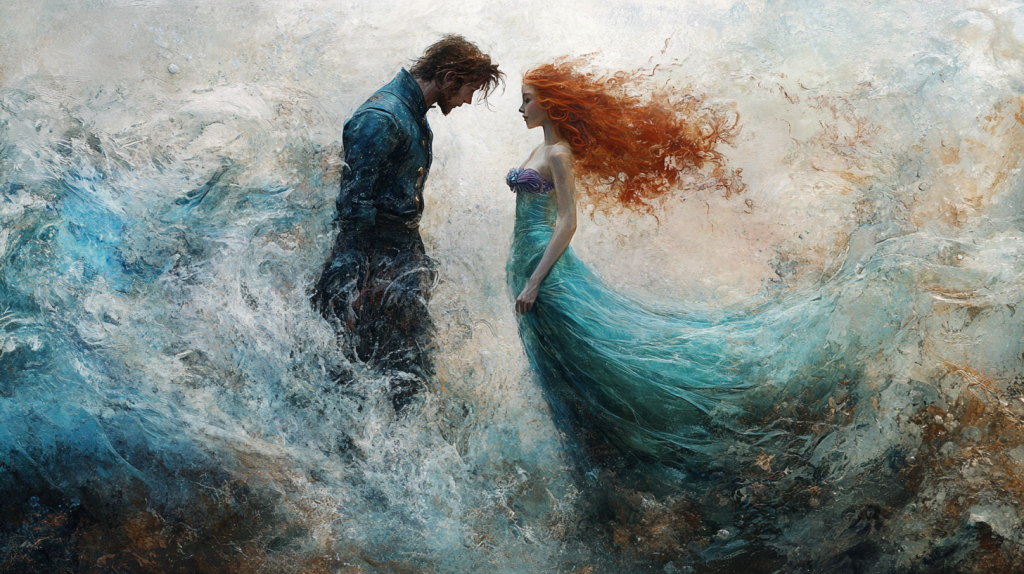Disney movies have enchanted generations with their magical stories and happy endings. But behind the colorful animations and catchy songs lie some truly dark tales. Many of these beloved stories have roots in much grimmer fairy tales. These original versions often feature violence, cruelty, and disturbing themes that Disney carefully scrubbed away. Exploring these dark origins can be both fascinating and unsettling. It reveals how much our storytelling has changed over time, and how Disney shaped these tales for modern audiences.
Cinderella’s Bloody Footwear

In the original Cinderella story, the stepsisters were far more cruel. They cut off parts of their feet to fit into the glass slipper. One chopped off her toes, while the other sliced her heel. Blood seeping from the shoe gave them away. This gory detail shows how far they’d go to win the prince’s hand.
Snow White’s Deadly Dance

The original tale of Snow White had a much darker ending for the evil queen. At Snow White’s wedding, she was forced to wear red-hot iron shoes. She had to dance in these burning shoes until she fell down dead. This brutal punishment was seen as justice for her wicked deeds.
The Little Mermaid’s Painful Path

Hans Christian Andersen’s Little Mermaid suffered far more than her Disney counterpart. Every step she took felt like walking on sharp knives. In the end, she didn’t win the prince’s love. She turned into sea foam, facing a choice between killing the prince or dying herself.
Sleeping Beauty’s Assault

The original Sleeping Beauty story is deeply disturbing. In some versions, the prince doesn’t wake her with a kiss. Instead, he assaults her while she’s unconscious. She only wakes up when she gives birth to twins. This dark twist turns a romantic tale into a horror story.
Pinocchio’s Deadly Lesson

Carlo Collodi’s original Pinocchio was much darker than Disney’s version. The cricket, later known as Jiminy, was killed by Pinocchio early in the story. Pinocchio himself was hanged from a tree, though he survived. These grim events were meant to teach children harsh lessons about disobedience.
The Hunchback’s Tragic End

Victor Hugo’s novel about the Hunchback of Notre Dame is far from a happy tale. Quasimodo doesn’t save Esmeralda. She’s hanged as a witch, and Quasimodo throws the man responsible to his death. Years later, Quasimodo’s skeleton is found embracing Esmeralda’s remains. This ending is a far cry from Disney’s upbeat version.
Rapunzel’s Painful Separation

In the Brothers Grimm version, Rapunzel’s prince is blinded by thorns when he falls from the tower. Rapunzel is cast out into the wilderness. She gives birth to twins alone before finally reuniting with the prince. Her tears restore his sight. This tale is full of suffering before reaching its happy ending.
The Frog Prince’s Violent Transformation

The Grimm fairy tale doesn’t feature a romantic kiss. Instead, the princess throws the frog against a wall in disgust. This violent act breaks the spell and turns him back into a prince. It’s a strange lesson about the transformative power of aggression rather than love.
Hercules’ Family Tragedy

The real Greek myth of Hercules is much darker than Disney’s version. Hercules kills his wife and children in a fit of madness caused by Hera. His famous twelve labors are a punishment for this crime. This tragic backstory adds a somber note to his heroic deeds.
Pocahontas’ Sad Reality

The true story of Pocahontas is far from a romantic tale. She was kidnapped, forced to marry an Englishman, and died young in a foreign land. Her real life was filled with tragedy, far from the Disney version of cross-cultural understanding and love.
Mulan’s Grim Fate

The original Chinese poem about Mulan has a tragic ending. After years of war, Mulan returns home to find her family dead. Overcome with grief, she takes her own life. This somber conclusion is a stark contrast to Disney’s triumphant heroine.
The Fox and the Hound’s Brutal Hunt

The book that inspired the movie is much harsher. The fox and hound don’t remain friends. Instead, the hound ruthlessly hunts the fox until the fox dies of exhaustion. This grim tale reflects the harsh realities of nature rather than the power of friendship.
Aladdin’s Chinese Origins

The original Aladdin story was set in China, not the Middle East. Aladdin wasn’t a lovable street rat, but a lazy troublemaker. The genie granted unlimited wishes, leading to more complex moral dilemmas. These changes show how Disney adapted the tale for a different audience and era.
Peter Pan’s Deadly Rivalry

J.M. Barrie’s original Peter Pan was much more sinister. He would “thin out” the Lost Boys when they got too old. His rivalry with Captain Hook was deadly serious, not playful. These dark elements give a more complex view of eternal childhood.
The Lion King’s Shakespearean Roots

While not based on a fairy tale, The Lion King draws heavily from Shakespeare’s Hamlet. In the play, nearly everyone dies by the end. Simba’s happy ending is a far cry from Hamlet’s tragic fate. This shows how Disney transformed a classic tragedy into a hopeful story for children.
17 Old Wives’ Tales That Are Actually True

Old wives’ tales have been passed down through generations, often dismissed as mere superstition. However, many of these age-old beliefs are rooted in truth. From health tips to weather predictions, these stories from the past can surprise us with their accuracy. Here are 17 old wives’ tales that are actually true.
Read More: 17 Old Wives’ Tales That Are Actually True
Katy Willis is a writer, master herbalist, master gardener, and certified canine nutritionist who has been writing since 2002. She’s finds joy in learning new and interesting things, and finds history, science, and nature endlessly fascinating.

